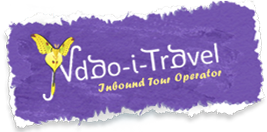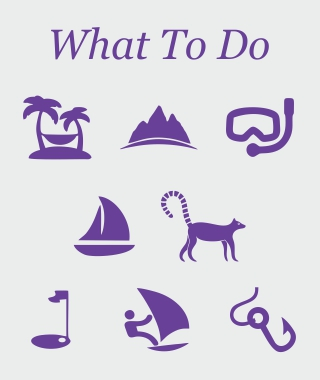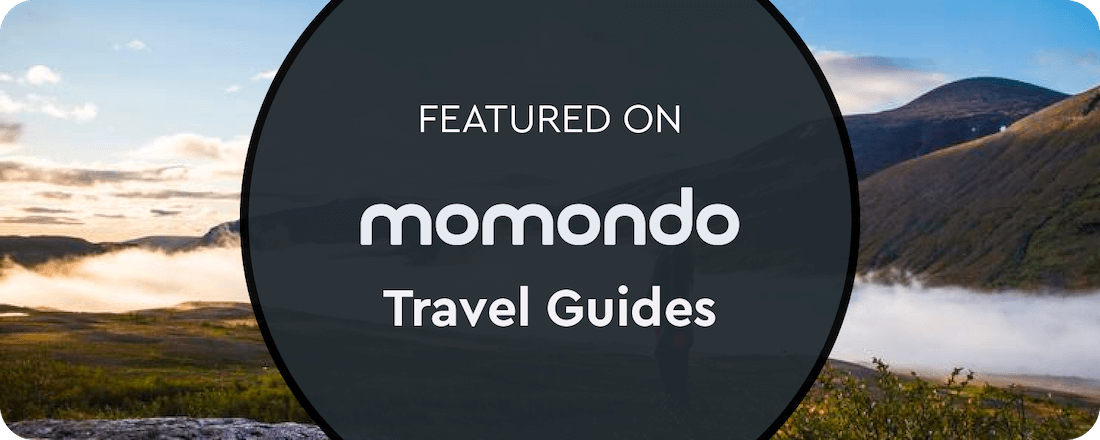Nosy Be Island – will delight the most demanding visitor
“Nosy Be?” Is that a typo for “Noisy Bee?” Nope. It means “big island” in Malagasy, though the island has been granted several nicknames over centuries, being probably “Nosy Manitra” (the perfumed island) the most popular of all. As soon as you arrive at Fascene’s airport your nose will soon understand why. Scenting ylang-ylang, coffee, cacao, vanilla and sugar cane plantations spread all over the island distil a balmy fragrance that will delight your sense of smell. The yellow ylang-ylang flower is one of the products used in the production of perfume essence. Red pepper is distilled as a perfume essence too.
Nosy Be’s landscape is varied and it is characterized by a great many hills that are overlooked by Mount Lokone (450m) and Mount Passot (329). From these high vantage points offers an exceptional view onto Nosy Be Bay, but also on the Radama Islands (south) and Mitsio Islands (north). There are eleven volcanic lakes on the island, which constitute an enormous water reserve for humans and crops. The whole coastline is punctuated by a great number of gorgeous bays and deserted beaches lined by palm trees. There are also many small islets and rocks which are often visited by refuges seeking for some private. Temperatures are pleasant around the whole year.
Nosy Be offers a wide range of activities that will please even the demanding visitor. Enjoy a relaxing break on white sandy beaches, blue-green sea and the amazing coral reefs. Explore the lush jungle in the Lokobe National Park and make the most of your holidays visiting some of the surrounding islands. Indulge yourself a day cruise to the outer islets of Nosy Komba, Nosy Tanikely and Nosy Sakatia; participate in a scuba diving adventure in the jewel-like archipelago of Nosy Mitsio or embark on a discovery trip to the remote Radama islands, with an astonishing rich undersea life. We will help you find your own way of exploring the natural wonders of this archipelago, far away from the tourist centers.
Among the various pleasures do not miss these:
The incredible beaches of Nosy Be. These little pieces of paradise with pearly white sand and turquoise blue sea, transparent as gin, create terrific places to experience the island's charm. They are ideal for swimming and water sports, with magnificent sunsets, like views of paradisiacal postcards. There can be very fun night life is also good - it's no surprise that more and more visitors come to Nosy Be as an excellent alternative to the expensive Mauritius.
Mount Passot&Crater Lakes. With its 329 meters above sea level, Mount Passot is the highest peak of the island. It is particularly recommendable to climb onto the top before sunset to see Nosy Be in all its beauty: jagged coasts, numerous bays and lovely coves, deserted beaches and the crystal-clear water reddening under the brighten twilight whilst the horizon changes its color into orange, pink and purple. It’s a good spot for admiring sunsets and the sweeping panorama. It’s also one of the best places to see Nosy Be’s crater lakes.
You should not miss a visit to the nice waterfall of Androadroatra with its crystal-clear opal waters. A 50m cascade sliding and falling over a wet rock wall all covered with moss and lichen into a natural pool.
Hell-Ville (Andoany) is a colonial town and the administrative center of the island, as well as its main port. Despite the off-putting moniker (named for Admiral de Hell, a French governor of Réunion), Nosy Be's main town is anything but hellish. Rather, it's an upbeat, comparatively smart place where frangipani and bougainvillea frame crumbling of old colonial buildings, pavement cafes bustle with tourists and expats sip strong espresso. The town is characterized by beautiful restored colonial buildings along the sea promenade, some of which were built early in 20th century. In the upper part of the port, old cannons dating back to the time of the pirates watch over the harbor. For the best sunset-viewing setting climb the hill where the old hospital was built. The sea gets dotted with white sails when the fishermen’s launches come back to port.
ENJOY THESE… activities to make your holidays in Nosy Be special:
*Quad ride in Nosy Be. Explore Nosy Be in an unprecedented way. Relax and feel strong through off-the-beaten paths: the quad. A superb quad adventure through Nosy Be awaits you! Adrenaline rush and rapture guaranteed!
*Visit Nosy Sakatia, the island of orchids. Nosy Sakatia is known for its flowers but also it has many other riches. The Orchid Island is still unspoilt piece of paradise, offering excellent snorkeling, diving and moderate hiking. Possibility of safari-sea turtles.
*A walk on the island of Nosy Komba. Do you like hiking? Discovery? The great outdoors? Nosy Komba is the ideal place for an easy hike, off the beaten track and in the forest, in the heart of a nature that is almost intact and an abundance of wildlife. Island rich in biodiversity and panoramas through the one-day way Robinson Crusoe.
*Visit Nosy Iranja. It is one of the most beautiful islands around Nosy Be. Here, the word paradise takes on its full meaning. It invites you to relax in a multicolored decor. Nosy Iranja is a place that dreams are made of. The most beautiful excursion. Do not miss out!
*A getaway close to nature in the Lokobe National Park. In the Lokobe National Park, chameleons, lemurs and birds live in an environment where the only sound is the ocean.
*Go to Nosy Tanikely Marine Reserve - "Natural aquarium" where fine sand, colorful fish and unforgettable moments of relax await you. You visit Nosy Tanikely Marine Reserve – famed for its world-class snorkeling and diving.
*Fishing day in Nosy Be. Off the northwestern coast of Madagascar, abounding of fish, all species of fish of the Indian Ocean can be found, and even the most demanding fishermen and anglers will be proud of their catches.
*Cruise on the islands of Nosy Be archipelago. Together with our partners "Ulysse Explorer", with the whole crew you will would fully enjoy your vacations, worrying for nothing because the skipper knows the region very well. His presence won’t modify in no way your liberty to navigate because he will be happy to let you the control anytime you want.
*Diving and snorkeling for everyone. From beginners to professionals. Training. The service is provided by our partners - certified dive centers offering the best standards in quality and safety. The late Jacques Cousteau described the waters of Madagascar as the world's most beautiful diving area.
*Whale watching at Nosy Be (July to September). Here we together with our partner «Ulysse Explorer» organize boat excursions daily for “whales watching”. We spot them and draw near without disturbing groups of whales, in general females with their calves. We will outdo them and at 100m we will shut off engines.
*Take a Nosy Be Helicopter Tour. Breathtaking views. A panoramic ride over the emerald green islands in the sapphire blue sea, making up the best vistas of Madagascar! This can be an excellent start to your stay in Nosy Be (Fascene’s airport transfer) or an exclusive final act, to glance at places you've been to (transfer to the Fascene’s airport).
Watch more photos about Nosy Be island here.







